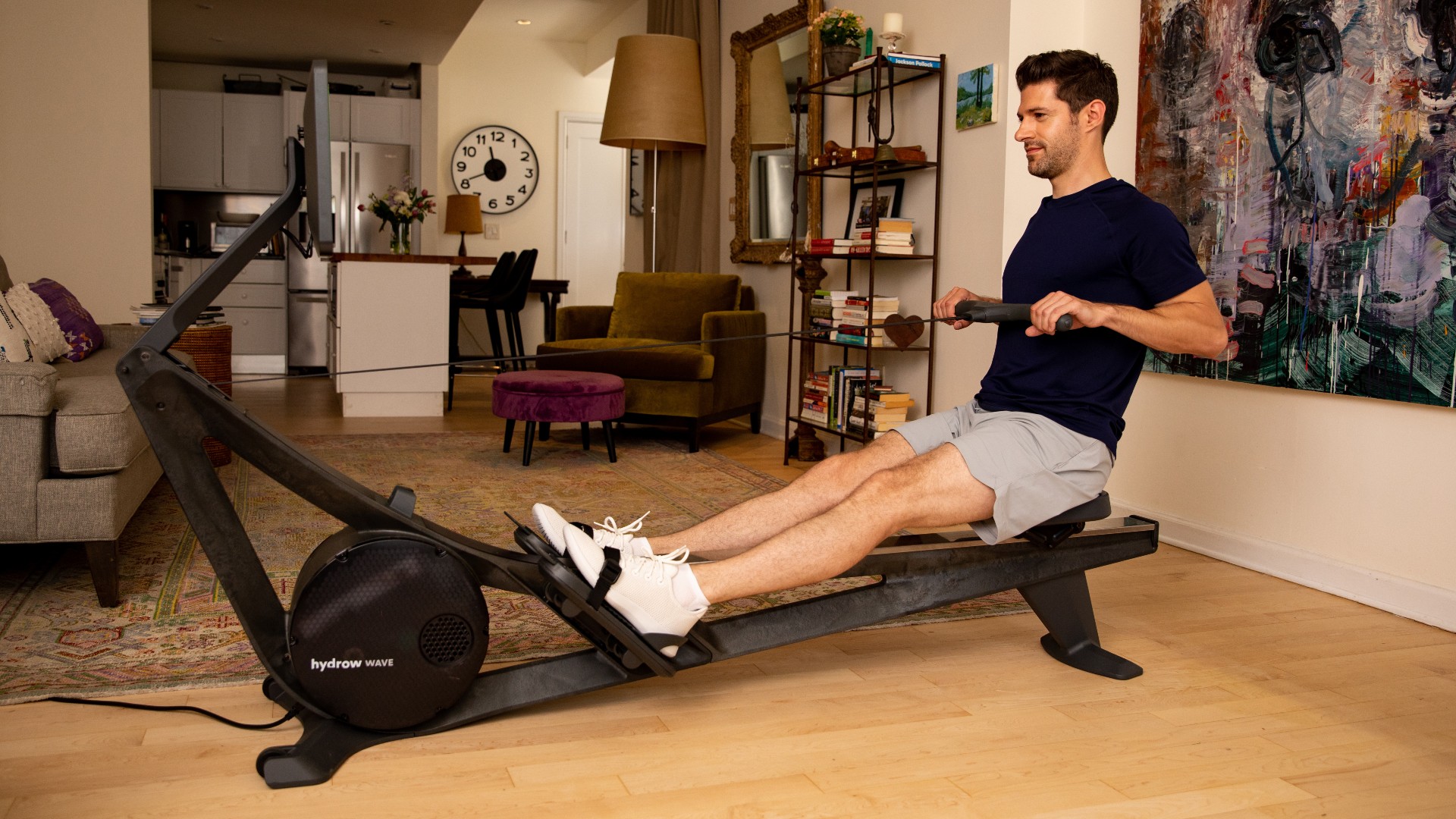
There are few types of exercise as beneficial for your overall health and fitness as rowing. It’s a tremendous cardiovascular workout that’s low-impact on your joints and it works muscles all over your body.
On the other hand, neither strapping in and coasting for a bit nor rowing until you drop will help you get the most from your time in the sliding seat – plus poor form can undermine well-programmed sessions. So we’ve enlisted the help of Mike Dostal, former British National Championship winner and a trainer for Hydrow’s excellent connected rowing machines (the Hydrow and Hydrow Wave, both of which we gave five-star reviews and feature on our selection of the best rowing machines), to break down the technique and supply three rowing machine workouts that are tailor-made for beginners.
Once you’ve worked your way through the below, we have plenty more rowing machine workouts for you to tackle, as well as a four-session a week rowing workout plan to sink your teeth into.
Rowing technique
To make the most of these ample benefits, however, your rowing technique needs to be watertight. “It’s vital that you engage the right muscles in the right order,” says Dostal.
“If you start the movement off right, you’ll feel your legs, glutes, core, and back muscles engage, and your arms will naturally flow into the body, helping generate a long, dynamic, powerful action with every stroke.”
The rowing stroke is broken down into four phases as follows:
1. The Catch
When sitting on the rower with your feet strapped in tightly, hold the handle with an overhand grip and your arms straight. Slide your bum on the seat towards your heels while keeping your torso upright and back straight. Take a deep breath in to engage your core and brace your body for action.
Get the Coach Newsletter
Sign up for workout ideas, training advice, reviews of the latest gear and more.
2. The Drive
With your core braced, extend your legs powerfully to initiate the rowing movement while exhaling forcefully. When your legs are almost fully straight, harness the momentum to lean back slightly into the stroke, keeping your core engaged.
3. The Finish
Use your large upper back muscles to help pull the handle in towards the lower part of your ribs, while continuing to lean back into the stroke.
4. The Recovery
This last phase is as crucial as the three preceding it. While maintaining a straight back and upright torso, extend your arms fully, lean forwards slightly and bend your legs to return to the start position. Breathe in as you recover to fill your lungs ready for the next powerful stroke.
Rowing Machine Workouts for Beginners
Of course, practice makes perfect, and Hydrow has distilled its workouts into three signature formats called Breathe, Sweat and Drive. Here Dostal explains the theory behind each one and provides three beginner-friendly workouts that you can try for yourself. He also suggests a workout to try if you get the chance to row on a Hydrow machine.
“Remember, whatever workout you pursue, make sure to include time for a proper warm-up and cool down,” he says.
Breathe
“Breathe workouts lay your foundations,” explains Dostal. “They are set at a relatively low overall intensity – around 20-24 strokes per minute (SPM) that should keep your heart rate between 60-85% of your maximum. They’re perfect if you’re new to fitness, want to work in the fat-burning zone or are working on building up your cardio after an extended break.”
The Workout
Three rounds:
3min @ 22 SPM
1min @ 24 SPM
1min @ 26 SPM
Dostal says: “The aim is to lower your split – the time it takes to cover 500m – across a series of intervals. Really zero in on your technique during each split and try to stay consistent, even as the rhythm cranks up.”
Hydrow example: 20-Minute Climbing Intervals Row with Aquil Abdullah
Sweat
“Sweat workouts are set at moderate to high intensity, around your anaerobic threshold,” says Dostal. “They target the mid to top range of your heart rate zones, somewhere between 85-95% of your max, and help develop resilience. Training around or slightly above your anaerobic threshold helps to gradually increase it, so you’ll be able to work out at higher intensities in the more comfortable aerobic zone.”
The Workout
30min @ 26 SPM
Dostal says: “This takes discipline and control to stay consistent. It’s as much a mental challenge as a physical one.”
Hydrow example: 20-Minute Pick Drill Row with Laine Maher
Drive
“Drive workouts will test your upper fitness limitations,” says Dostal. “Think of high-intensity interval training. They are designed to build strength and speed across a series of short, sharp intervals. Typically, the rhythm during the max efforts will sit between 26-32 SPM, pushing your pulse into the highest heart rate zone, but these intervals are spaced out with lower-intensity recovery periods so you can push hard throughout.”
The Workout
Eight rounds:
1min 15sec @ max pace
45sec @ recovery pace
Dostal says: “Drive workouts are wicked and an excellent test of grit. Driving through your legs is critical. It’s also important you don’t abandon proper form even when you start to fatigue. Stay committed and power through to the finish.”
Hydrow example: 20-Minute Unleashed Row with Dani Hansen

Sam Rider is an experienced freelance journalist, specialising in health, fitness and wellness. For over a decade he's reported on Olympic Games, CrossFit Games and World Cups, and quizzed luminaries of elite sport, nutrition and strength and conditioning. Sam is also a REPS level 3 qualified personal trainer, online coach and founder of Your Daily Fix. Sam is also Coach’s designated reviewer of massage guns and fitness mirrors.









